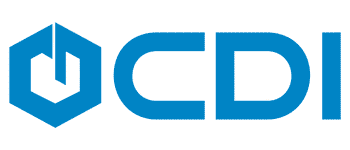Everyone is special, sort of - Creating a standard user attribute profile
- CDI
- Jun 16, 2022
- 3 min read

By Kyle Knebel
As a Laserfiche Administrator, have you ever wondered if you could give your Laserfiche users a pre-built set of saved searches, custom toolbar icons, file download options, or column profiles, just to name a few? You can do this by using “Attributes.”
This month’s article will focus on setting up and deploying attributes to your users. Pre-configuring these Laserfiche client settings is a valuable function that a Laserfiche Administrator can use. In addition, attributes can be used if you have deployed either the Laserfiche Windows “thick” Client or the “thin” Web Client.
While in the Laserfiche Administration Console or Web Management screen, you may have noticed a tab for Users called “Attributes.”

You can save every customization, Option setting, saved Search, Print, or Email setting for the user under this Attribute tab. You can copy these settings from one user to another or the Everyone supergroup. Unfortunately, attributes cannot be copied to Repository groups.
If you create a saved search, that information is stored as an Attribute. If you set the Options to download image files as PDF for color and black & white images, that information is stored as an Attribute. If you customize your toolbar, that information is stored as an Attribute.
Before we get into some examples, it should be pointed out that the attributes are not cross-platform compatible. If attributes are created in the Windows Client, they should be copied in the Windows Administration Console to those users who use the Windows Client. If you users have the Web Client, you should be using the Web Management Console.
Let's take a look at a few examples.
Saved Searches
Any user can create and save a Search.

Once that user saves the search, the Laserfiche Administrator can navigate to the appropriate console and find the user in the User and Groups node.
For Windows:
Open the user’s properties and select the “Attributes” tab, then View the subset: “SavedSearch.”

For Web:

In the list, you will see three lines per saved search. It will look different in the Windows Administration Console vs. the Web Management Console.
Windows Console:

Web Console:

Also, you will need to copy the “[WebAccess]SavedSearches” attribute.

In both Consoles, you can download the attributes as an XML file, then import that XML file to another user’s attributes.


Note: You cannot copy to a group. You can copy it to an individual user or the “Everyone” supergroup.
Column Profiles
In the Client, a user may have saved a set of custom column profiles. This is available in both the Windows Client and the Web Client, although they look slightly different.
In the Windows Client, you can rearrange the already visible columns, but you can also add columns. If you right-click any column, you’ll get a pop-up, as seen below. Users can select, save, and manage any column profiles that might have been created.

Once a profile is saved, it is available in the user’s Attributes tab, as we saw previously in the Administration Console. The same process of downloading the selected lines as an XML file can be used to copy the column profile to other users. Also, you can copy all the profiles at once by selecting all the profiles you need.

Select the four lines and press the Export button on the right.

In the Web Client, you can rearrange the already visible columns, but you can also add columns. If you right-click on the column headers, you’ll get a pop-up, as seen below. Next, select the Column Picker option.


Users can also use the “Saved Columns” option to select, save, and manage any column profiles that might have been created.

Below is an image of the Web Client’s attributes, filtered by “XmolColumnProfiles.” You’ll want to select the three items labeled DATA, DATA0, and DATA1, then download the XML by pressing the Download option at the top right of the screen.


Custom Toolbar
Many times, a user will add some additional toolbar icons to their Laserfiche client. Those settings can be copied from one user to multiple users.
For the Windows Client, the toolbar configuration is saved under the local computer’s Registry settings under HKEY_CURRENT_USER\SOFTWARE\Laserfiche\Client8. The data can be copied via a windows Group Policy or login script. Laserfiche does not handle this on its own.

For the Web Client, go to the web client Management page, and go to the Attributes tab for the desired user. Select [WebAccess]ToolsetFolderBrowser and download the attribute.

Laserfiche has many ways to ease the distribution of preferred configurations across the Windows Client and the Web Client to users. We hope you find these examples helpful.

CDI NEWSLETTER
Stay up to date with all the latest Laserfiche news, CDI webinars, blogs, and more!




Comments